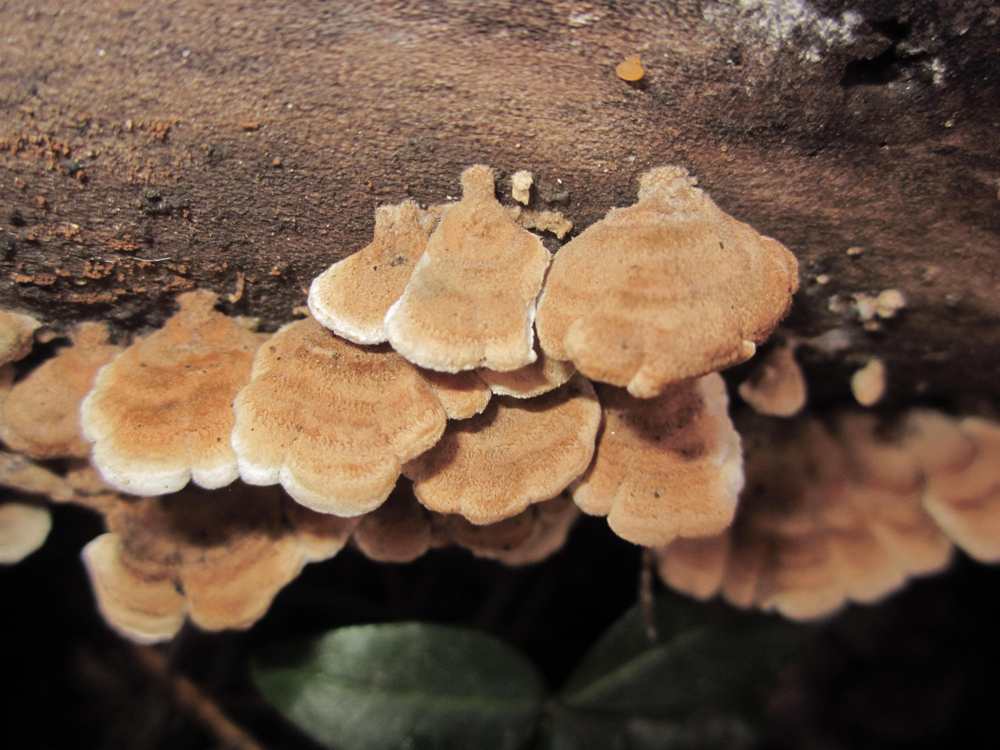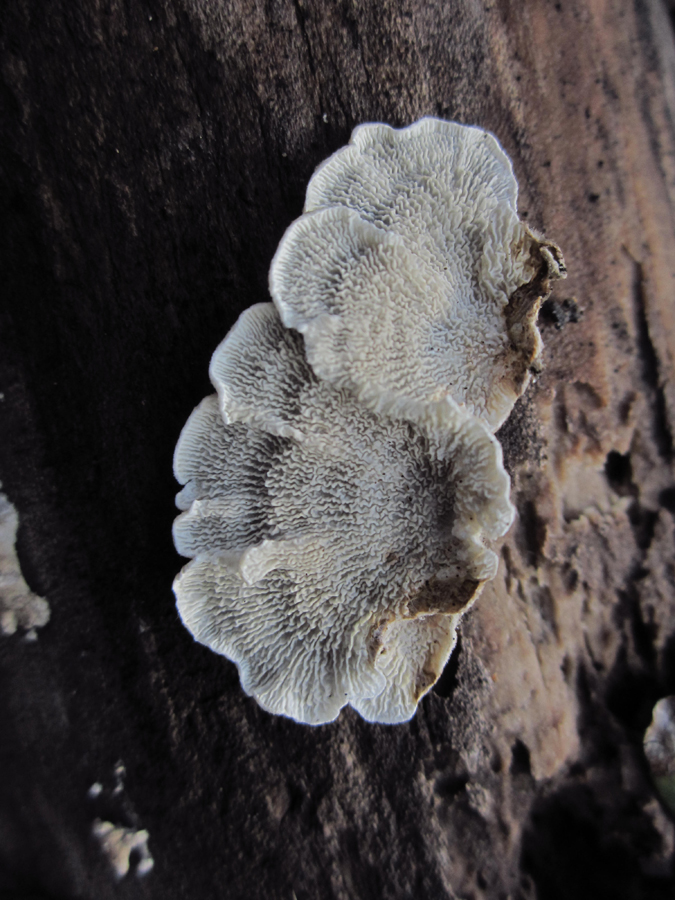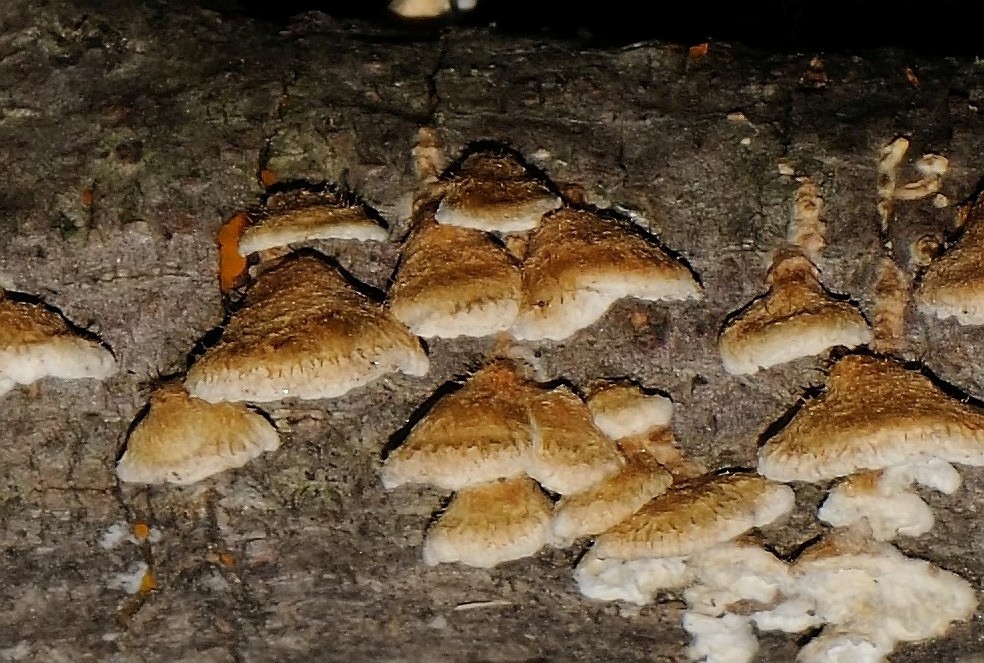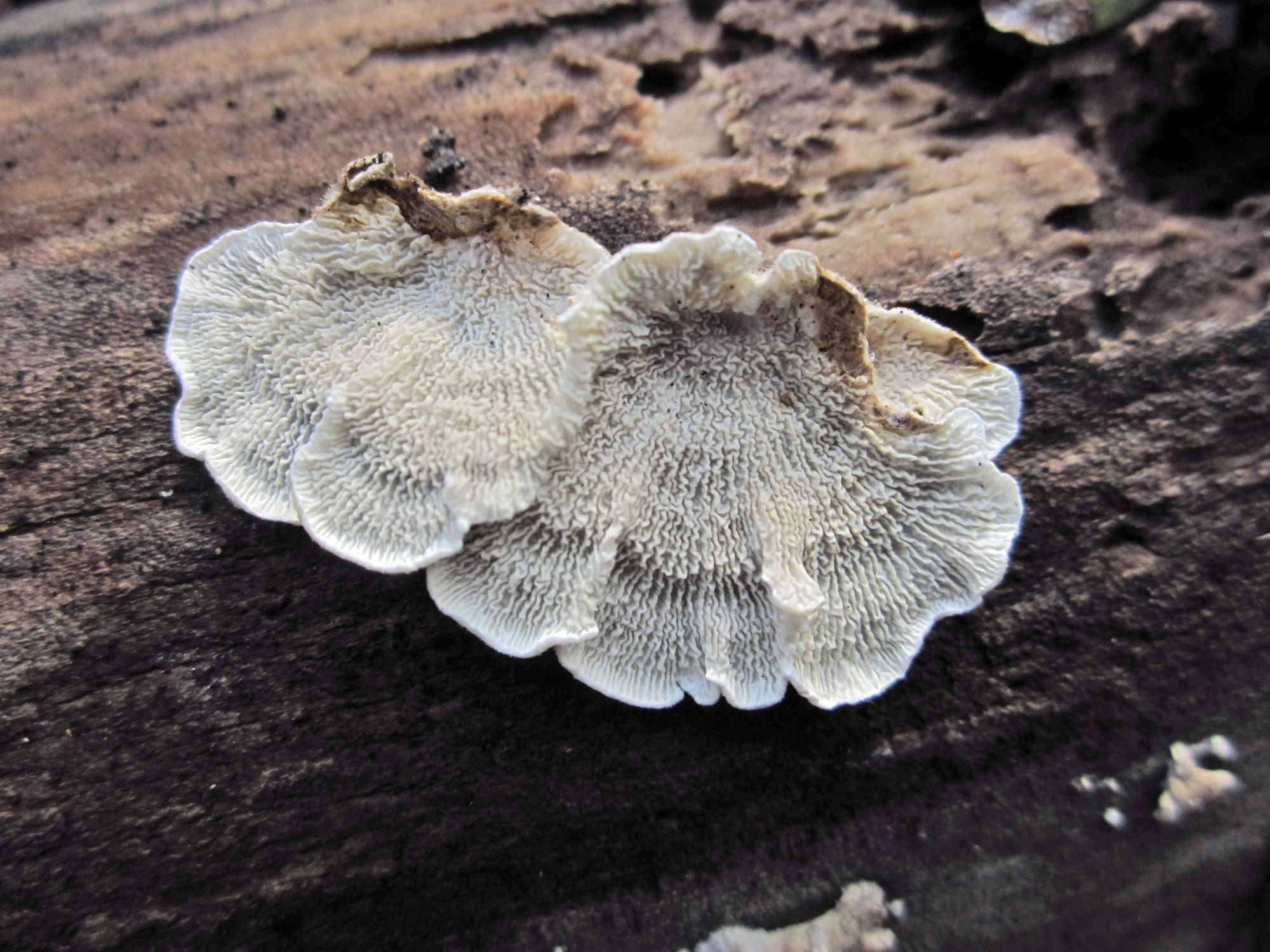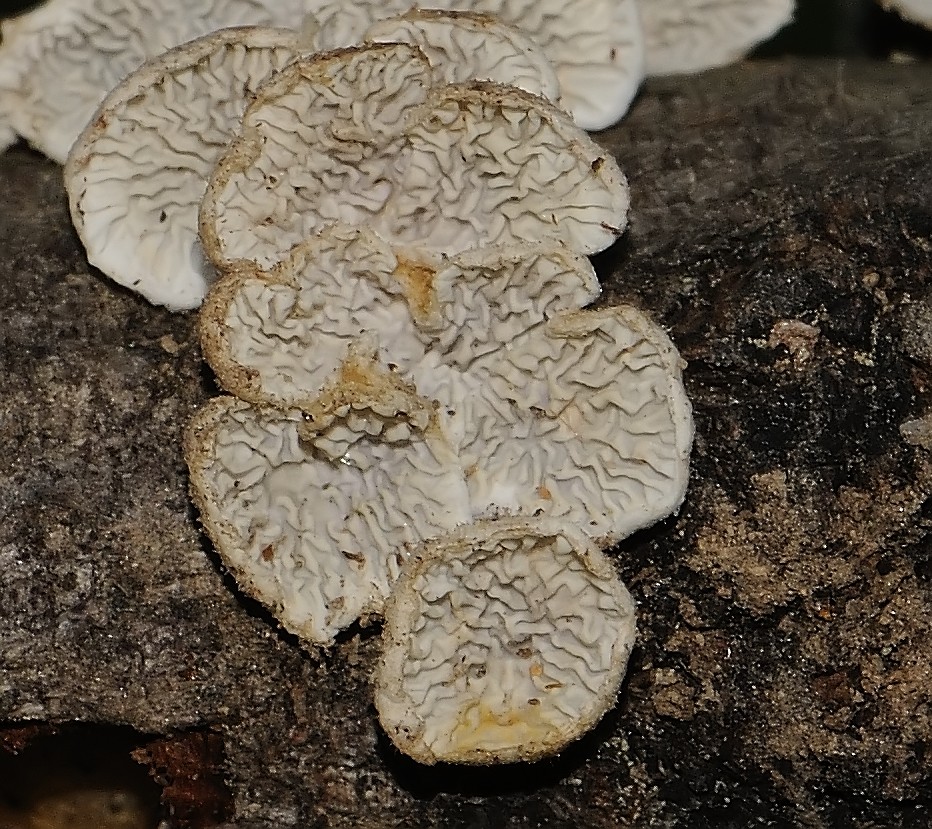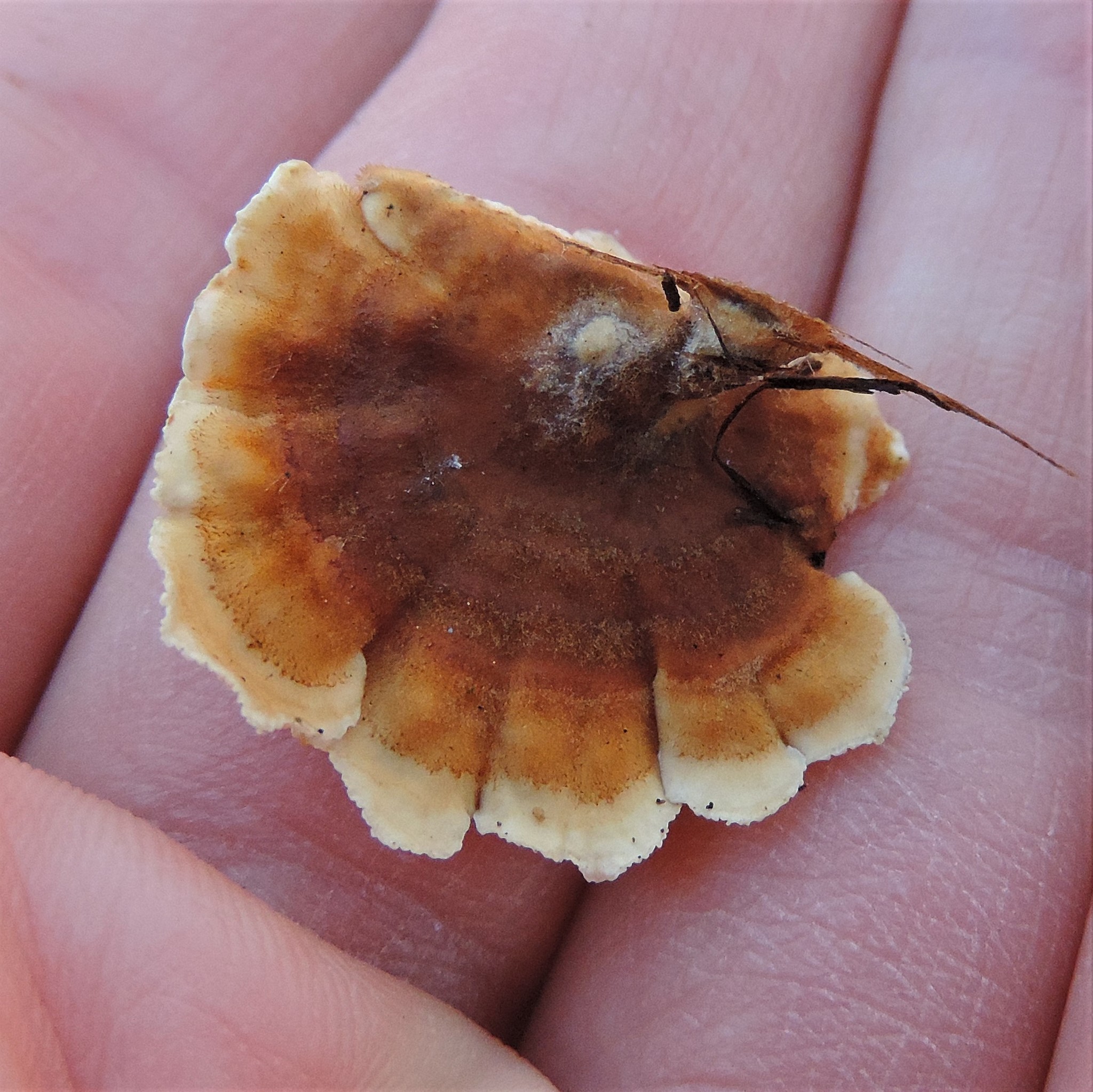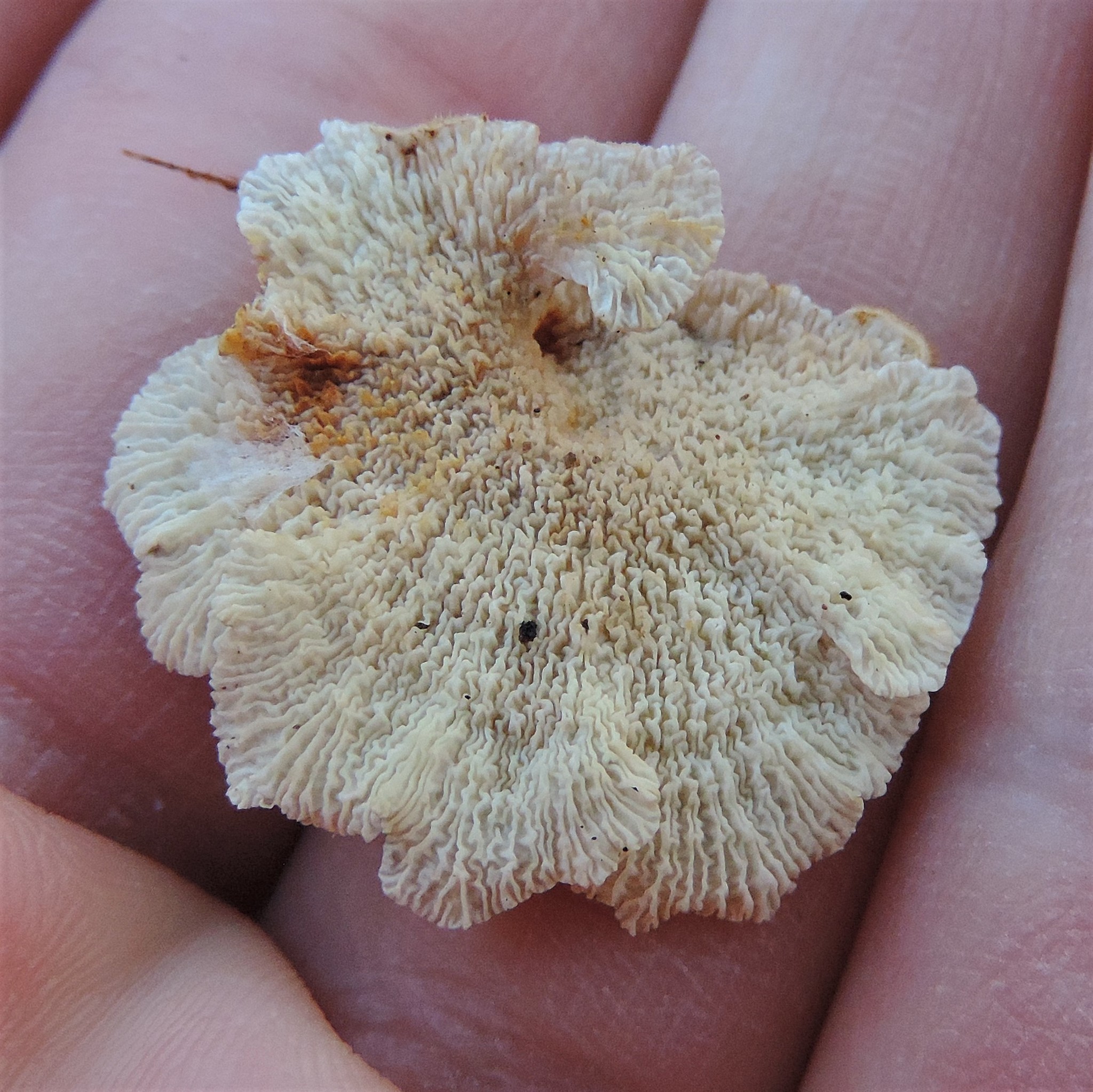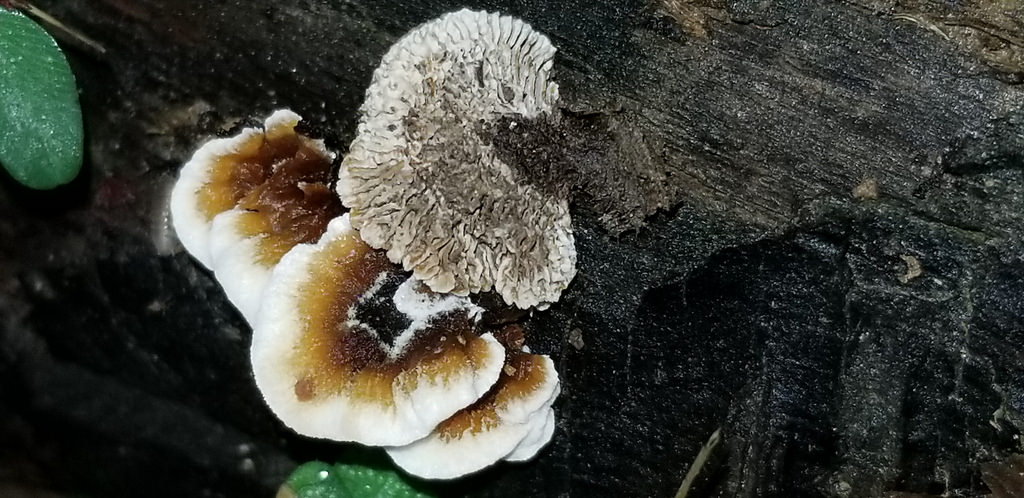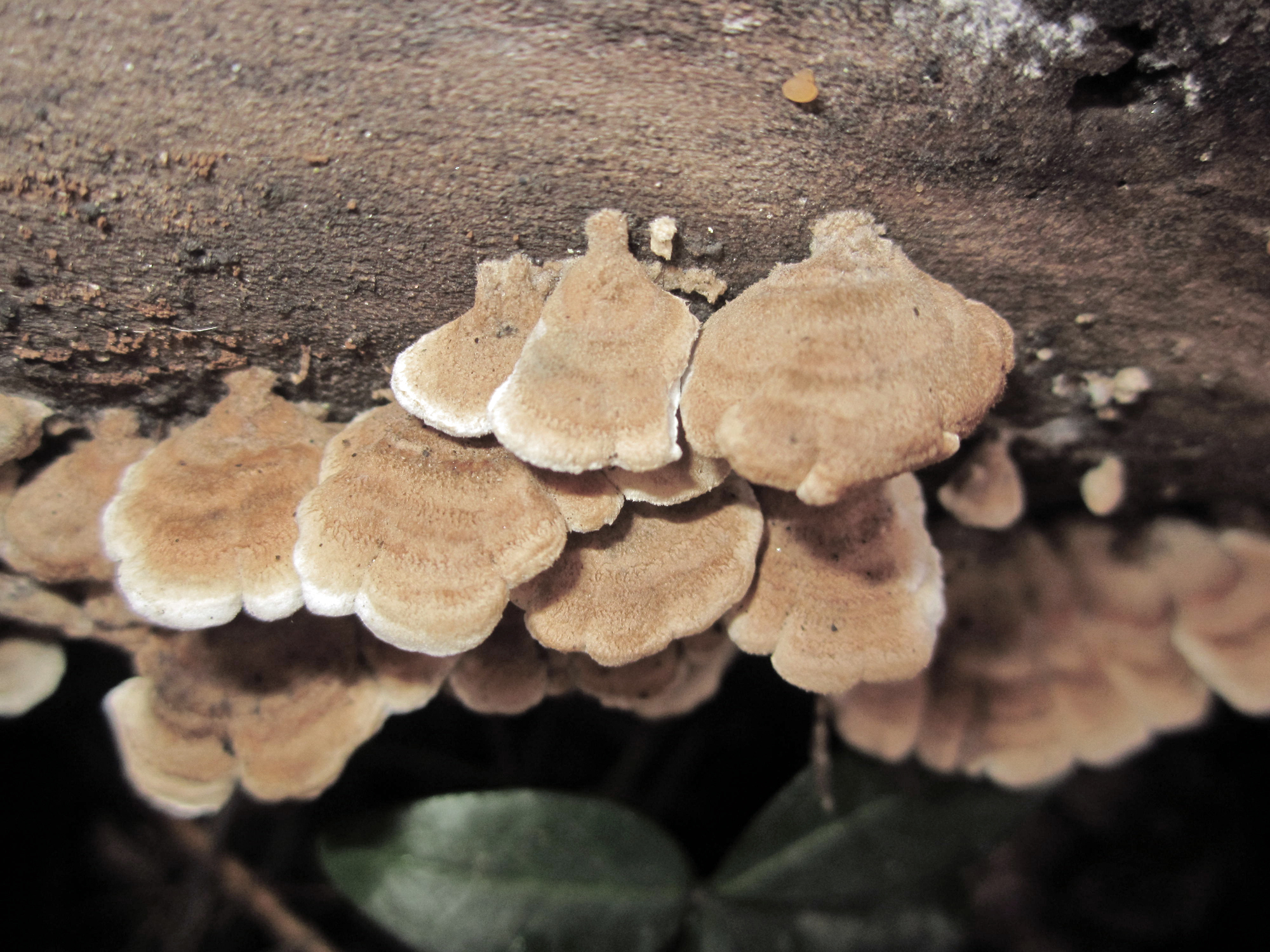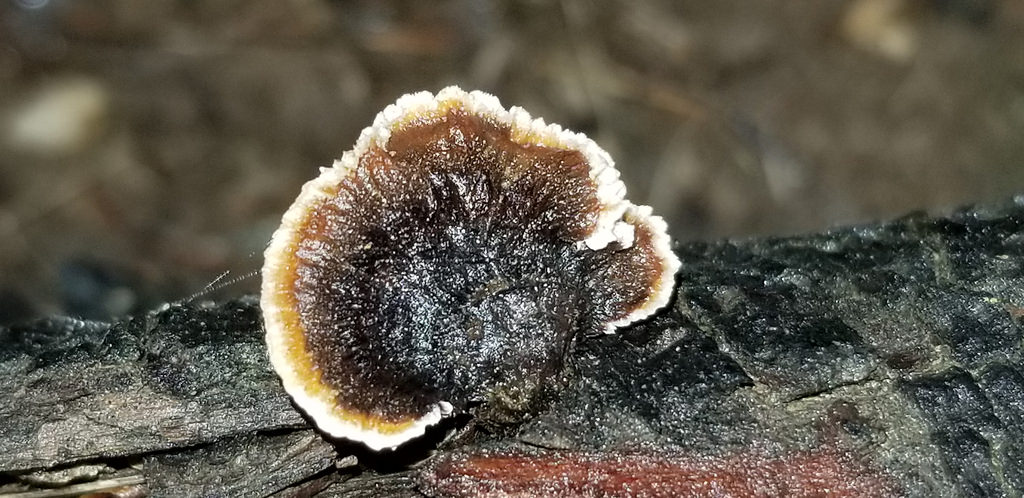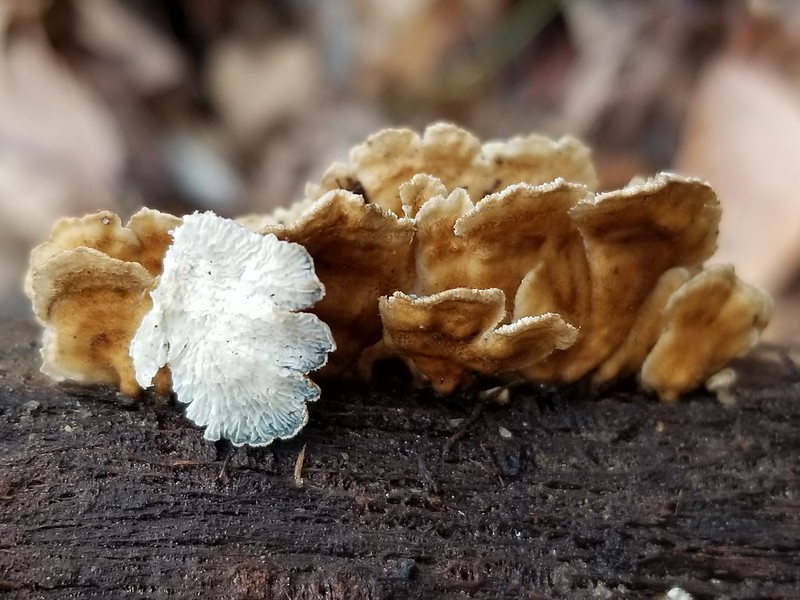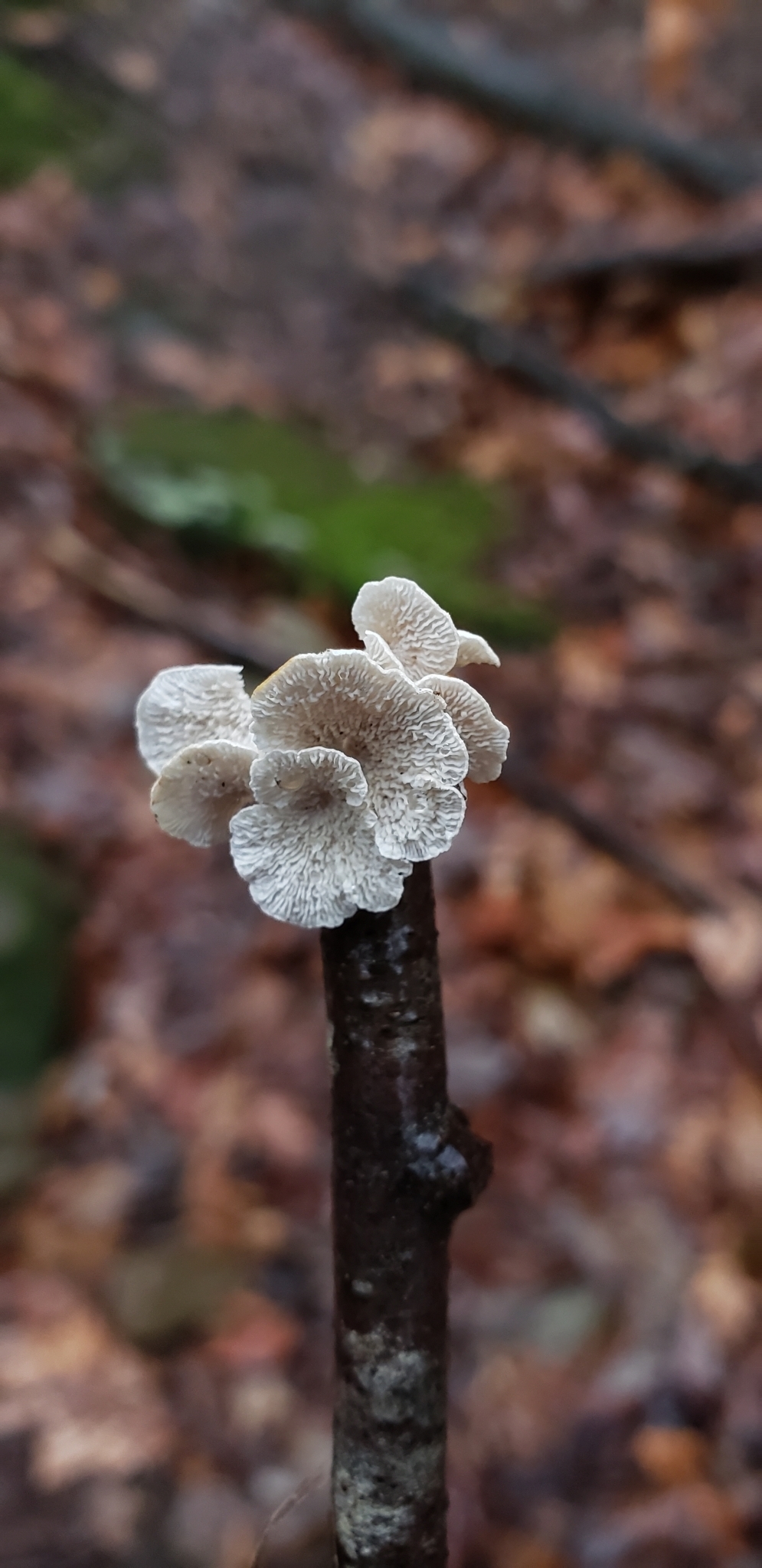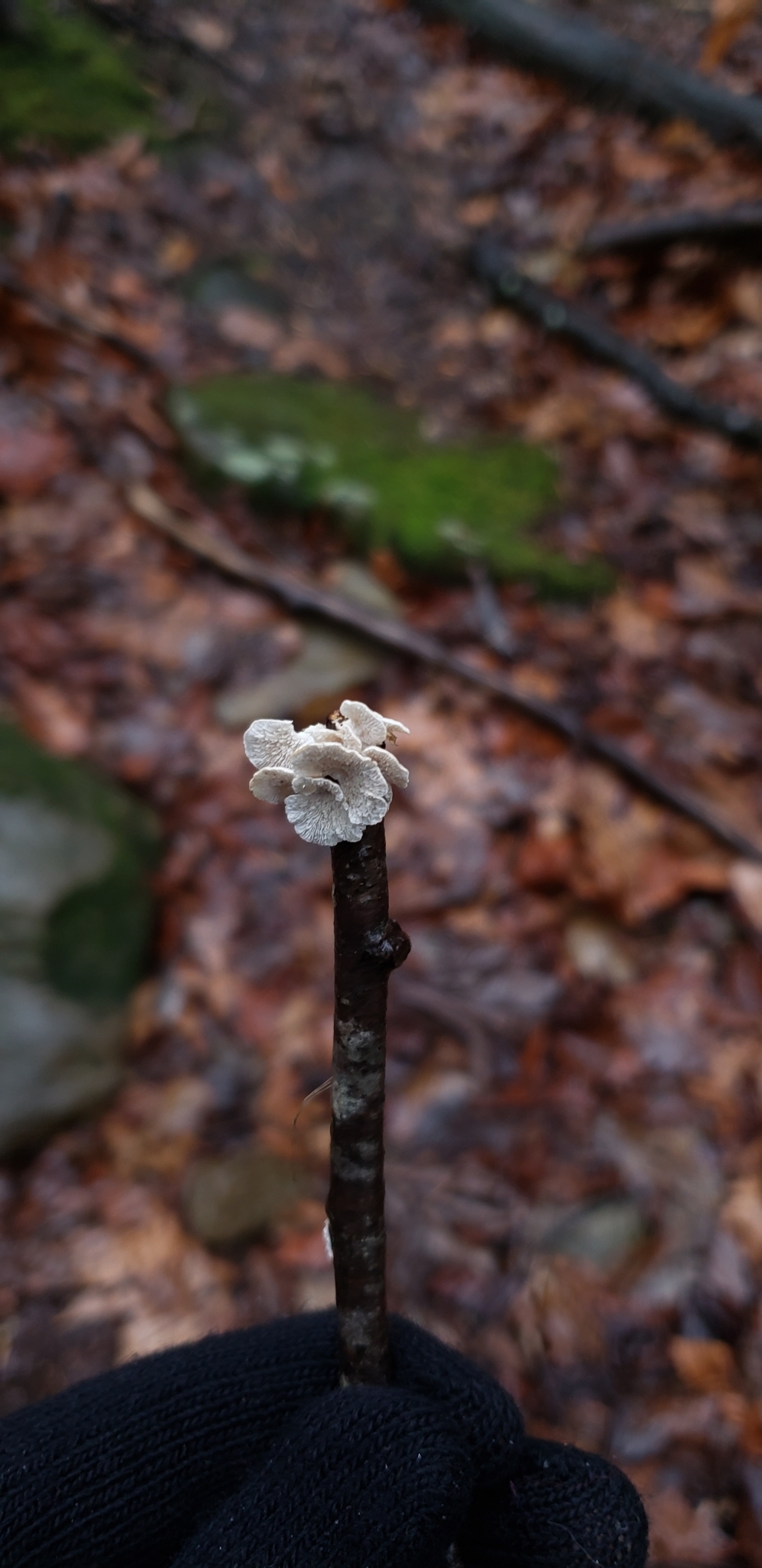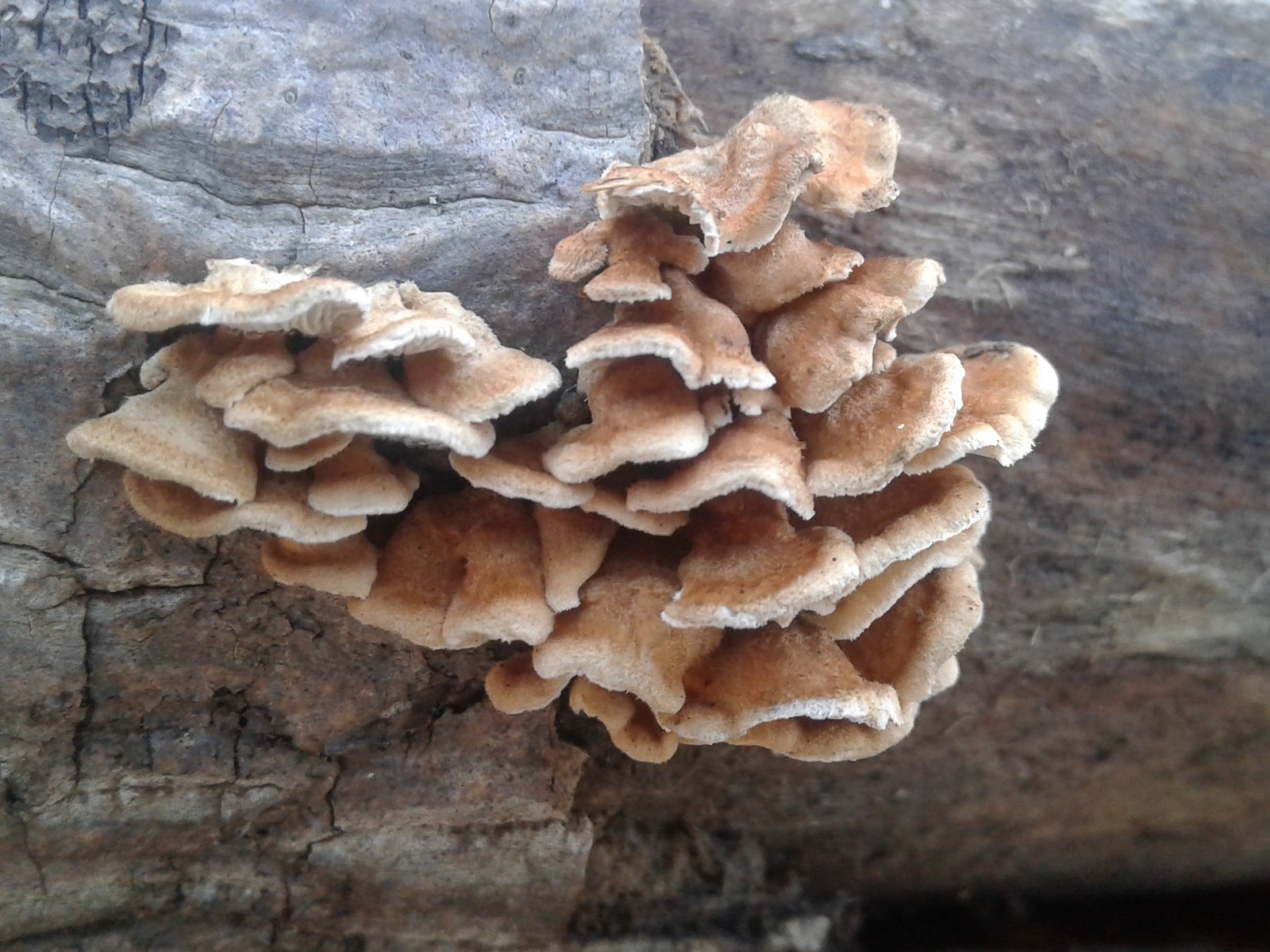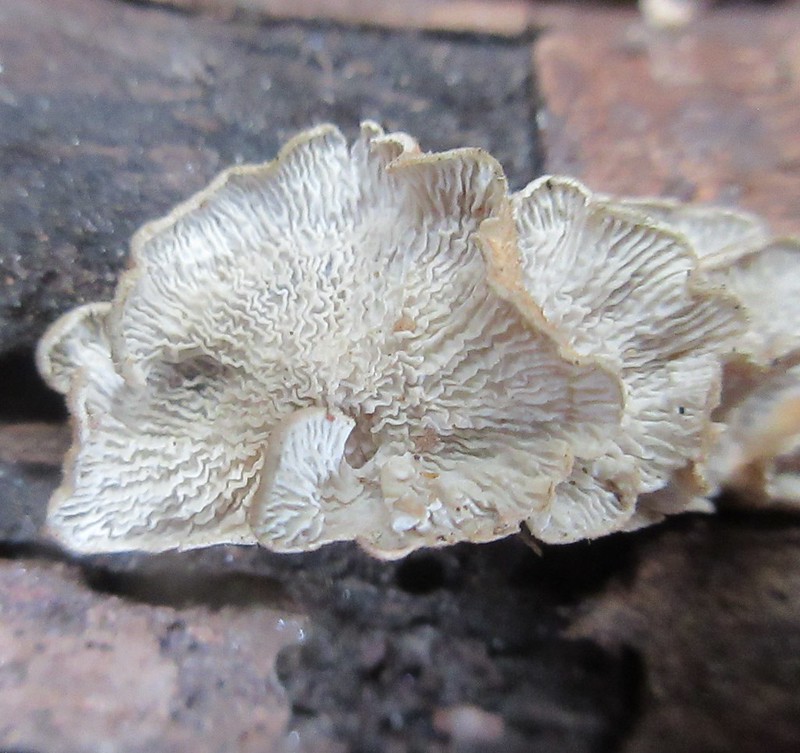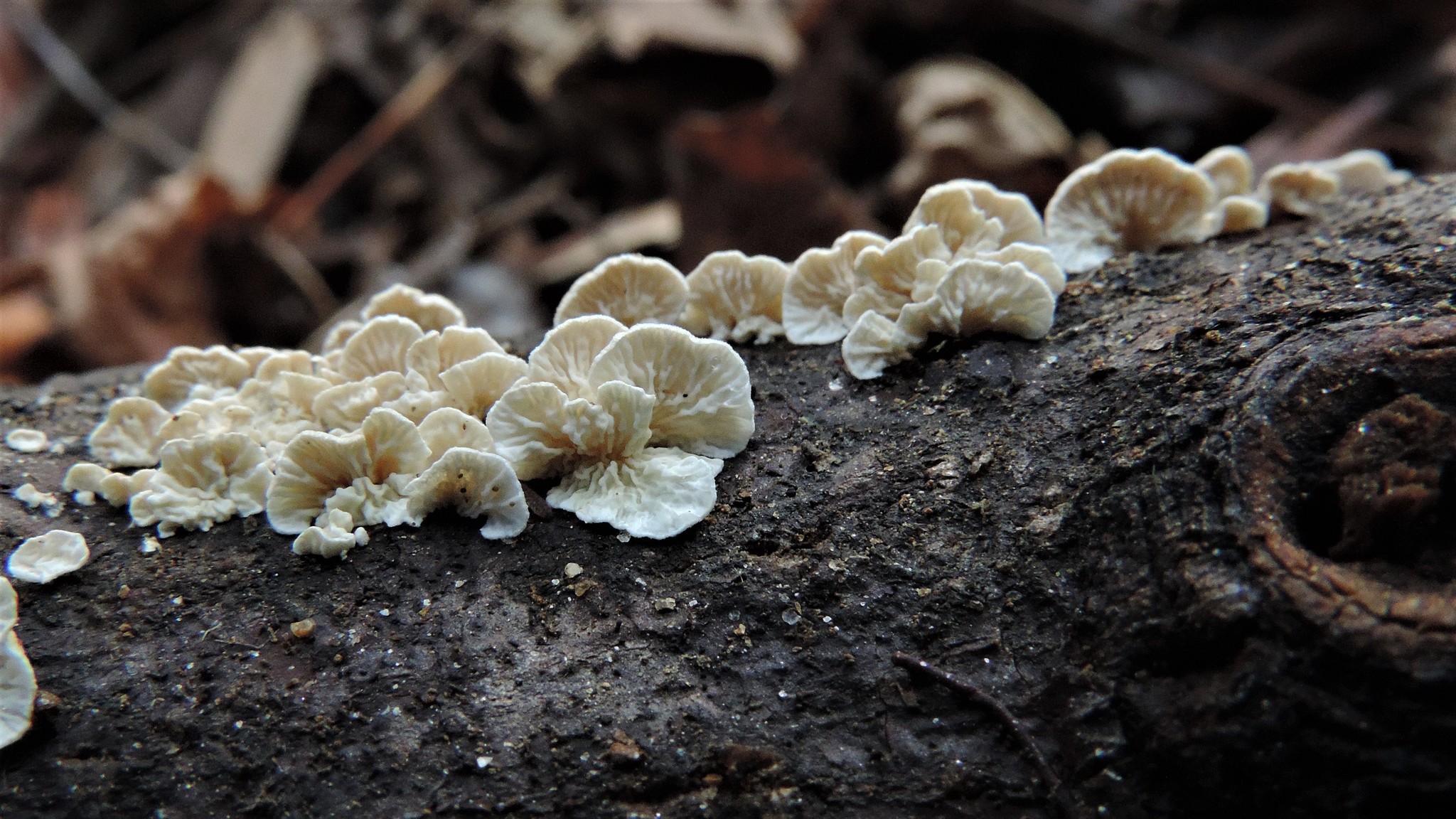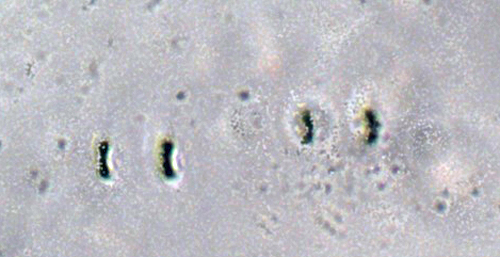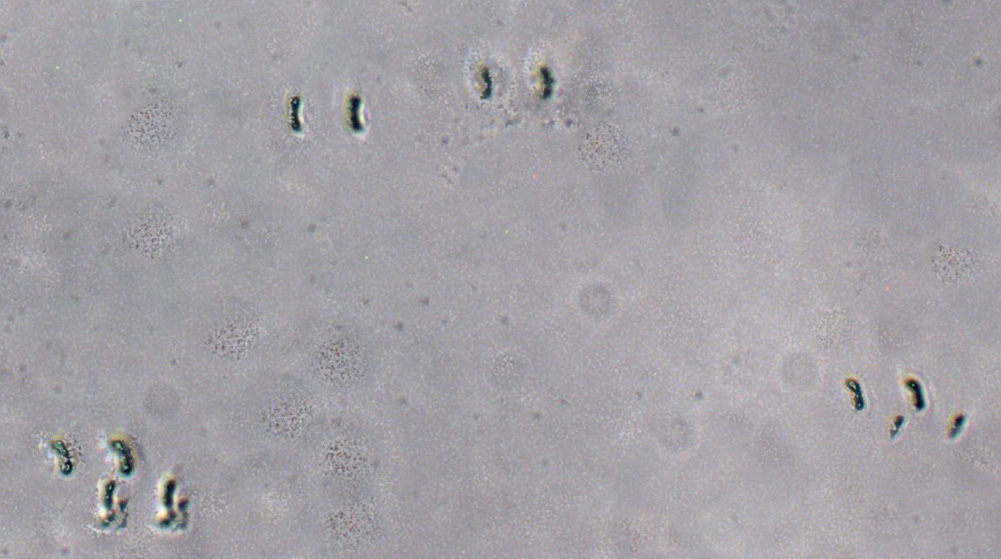Map Snapshot







19 Records
Status
Found in clusters on hardwoods.
Description
Clusters on hardwoods. Fruiting body: Yellowish to red-brown (white in age) with layer of fine hairs; shell-shaped; pale margin; often lobed, scalloped with inrolled margin. Gill-like structures: White to gray; crimped, forked. Stalk: None. (J. Solem, pers. comm.)
Seasonality Snapshot
Source: Wikipedia
| Plicaturopsis crispa | |
|---|---|

| |
| Scientific classification | |
| Domain: | Eukaryota |
| Kingdom: | Fungi |
| Division: | Basidiomycota |
| Class: | Agaricomycetes |
| Order: | Amylocorticiales |
| Family: | Amylocorticiaceae |
| Genus: | Plicaturopsis |
| Species: | P. crispa
|
| Binomial name | |
| Plicaturopsis crispa | |
| Synonyms | |
| Plicaturopsis crispa | |
|---|---|
| Ridges on hymenium | |
| Cap is offset | |
| Hymenium attachment is not applicable | |
| Lacks a stipe | |
| Spore print is white | |
| Ecology is saprotrophic | |
| Edibility is inedible | |
Plicaturopsis crispa,[2] the crimped gill or crispling, is a saprotrophic[3][4] species of fungus in the genus Plicaturopsis that can be found in temperate regions year-round, often on hazel, alder, and beech trees.[5]
The fungus has a wide distribution, having been recorded in Europe, Asia, Australia, and North America.[6] In Britain, its range has been rapidly increasing with 78% of all records of P. crispa in the FRDBI (Fungal Records Database of Britain & Ireland) being from after the year 2000, many of which are in areas with no previous recordings of the species.[3]
Taxonomy
[edit]Originally described in 1794 by Persoon as Merulius fagineus, he then reclassified it in 1800 as Merulius crispus.[3] Then, in 1821, Fries proceeded to move it into Cantharellus but later, in 1862, had second thoughts and moved it to Trogia,[3] a genus composed of several tropical species with similar hymenial ridges.
In 1872, the American mycologist Peck described a new genus Plicatura (from plicate = folded) for the American fungus P. alni. This fungus had already been described in Europe by Fries as Merulius niveus.[3] This caused Karsten to produce the combination Plicatura nivea. Then, in 1922, Carleton Rea abandoned the genus Trogia and moved T. crispa into Plicatura in his book British Basdiomycetae.[3]
In 1964, Derek Reid emphasized the morphological differences between both of these Plicatura species and erected a new monotypic genus Plicaturopsis for P. crispa.[3]
Molecular findings
[edit]On the basis of a six-gene study, Binder and colleagues (2010)[7] erected a new order called Amylocorticales that confirmed the previous relationships[7] suggested in Eriksson et al (1981). P. crispa undoubtedly belongs within this group and this new order is sister to the Agaricales.[3]
Its worth noting that Merulius, Cantharellus, Trogia, and Plicatura are not closely related as previously thought but are instead from various different orders[3] (Polporales, Cantharellales, Agaricales, and Amylocorticales respectively).
Description
[edit]It forms clusters on typically deciduous trees on decomposing branches.[8][4] Fruit bodies are generally 1-3 cm in length with bracket-like semi-circular shell shapes. Upper surface is normally concentrically zoned getting paler as it approaches the edge. Underside is made up of pale forked folds, giving a gill-like appearance.[5] It produces white spores[5][4] which are small, narrow allantoid, weakly amyloid, and only 3–4.5 x 1–1.2 μm.[3]
Ecology
[edit]Plicaturopsis crispa is an effective participant in the initial phase of decay, colonizing predominantly dead branches of deciduous trees (Fagus and Betula) and is associated with a white rot.[9] A few years into the succession of wood decomposition, strong competitors such as Trametes versicolor and the split-gill fungus Schizophyllum commune often displace P. crispa.[9]
Gallery
[edit]-
Cluster of P. crispa on a fallen birch Log
-
Fruiting bodies of 'P. crispa
-
The gill-like ridges of P. crispa
References
[edit]- ^ Reid, Derek Agutter (1964). "Notes on some fungi of Michigan—I. 'Cyhellaceae'". Persoonia - Molecular Phylogeny and Evolution of Fungi. 3 (1): 150. eISSN 1878-9080. ISSN 0031-5850.
- ^ "Plicaturopsis crispa (Pers.) D.A.Reid". www.gbif.org. GBIF. Retrieved 2022-04-14.
- ^ a b c d e f g h i j Henrici, Alick (2018-04-17). "Plicatura crispa - spreading rapidly in Britain". Field Mycology. 19 (2). British Mycological Society: 61–64. doi:10.1016/j.fldmyc.2018.04.010.
- ^ a b c "Plicaturopsis crispa". www.messiah.edu. Retrieved 5 March 2022.
- ^ a b c Buczacki, Stefan (2012). Collins Fungi Guide. HarperCollins. p. 476. ISBN 9780007466481.
- ^ "Plicaturopsis crispa (Pers.) D.A.Reid". Global Biodiversity Information Facility (GBIF). Retrieved 14 April 2022.
- ^ a b Binder, Manfred; et al. (2010). "Amylocorticiales ord. nov. and Jaapiales ord. nov.: Early diverging clades of Agaricomycetidae dominated by corticioid forms". Mycologia. 102 (4): 865–880. doi:10.3852/09-288. PMID 20648753. S2CID 23931256 – via T&F.
- ^ "Crimped Gill (Plicaturopsis crispa)". Maryland Biodiversity Project. Retrieved 5 March 2022.
- ^ a b "Home • Plicaturopsis crispa v1.0". MycoCosm. US Department of Energy Joint Genome Institute. Archived from the original on 2020-09-28. Retrieved 2022-04-14.
